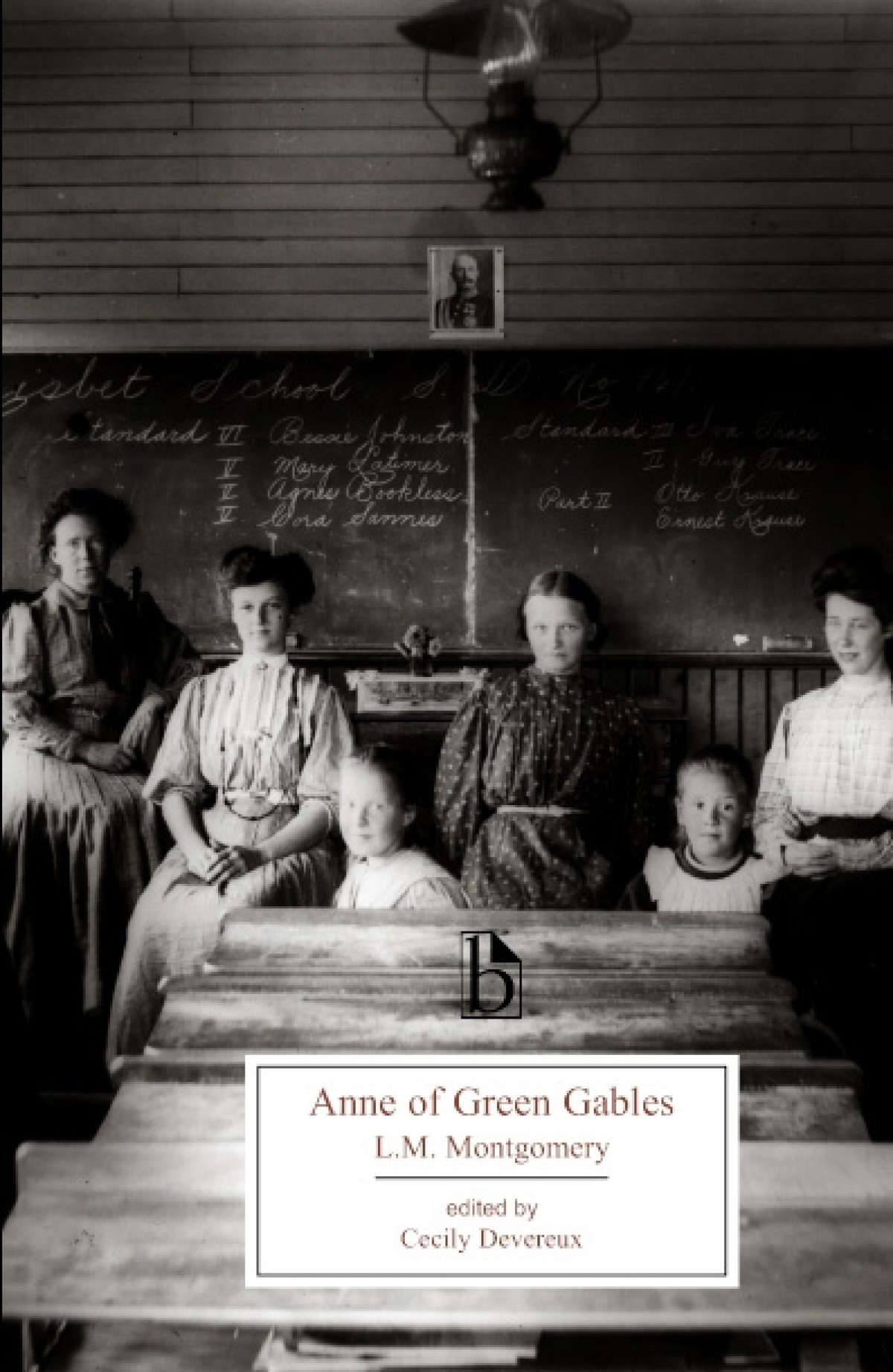Celebrating Canada Book Day with Lucy Maud Montgomery
 To celebrate Canada Book Day this year, we thought we would share a brief excerpt from one of our favourite Canadian writers, Lucy Maud Montgomery! The following is excerpted from Appendix B of our edition of Anne of Green Gables, “Montgomery on Writing:‘The Way to Make a Book.’”
To celebrate Canada Book Day this year, we thought we would share a brief excerpt from one of our favourite Canadian writers, Lucy Maud Montgomery! The following is excerpted from Appendix B of our edition of Anne of Green Gables, “Montgomery on Writing:‘The Way to Make a Book.’”
Write, I beseech you, of things cheerful, of things lovely, of things of good report. Don’t write about pig-sties because they are “real.” Flower-gardens are just as real and just as plentiful. Write tragedy if you will, for there must be shadow as well as sunlight in any broad presentment of human life; but don’t write of vileness, of filth, of unsavory deeds and thoughts. There is no justification of such writing. The big majority of the reading public doesn’t want it; it serves not one good end; it debases a God-given talent. Never mind if some blase [sic] critic sneeringly says that your book will “please the Young Person.” You may be justly proud if it does. The Young Person’s taste is well worth pleasing because, thank God, it is generally pure and natural, delighting in simplicity, not demanding salaciousness to spur a jaded appetite that has been vitiated by long indulgence in tainted food.
Don’t spin your book out too long. The day of the three-volume novel[1] passed with the crinoline skirt[2] and the stagecoach. Don’t make anybody too bad or anybody too good. Most people are mixed. Don’t make vice attractive and goodness stupid. It’s nearly always the other way in real life. Don’t be content with writing pretty well; do your best; if you are only describing a stone wall, make your readers see that wall, see it yourself first; cut and prune, but—don’t make things too bare. If you were a genius of the first rank you might present stark facts fascinatingly; but ordinary writers need a few branching sprays of fancy. Study and observe life that you may paint it convincingly; cultivate a sense of dramatic and humorous values; feel what you write; love your characters and live with them—
AND KEEP ON TRYING!
When you have your book written—what then? Send it to any publishing firm of good repute and standing you prefer. Don’t worry over the fact that you are unknown and deduce therefrom the conclusion that your manuscript won’t be read. It will be read; it may, and—if it is your first—very likely will, be sent back to you. Don’t throw it in the fire; don’t sit down and cry; just do it up and send it to the next firm on your list. If there is anything in it, it will find acceptance finally. Don’t have anything to do with firms that offer to publish your book if you will pay half the expenses. Arrange to have it published on a royalty basis. On your first book you can’t expect more than a ten per cent. royalty. Some firms offer to purchase a manuscript for a certain sum cash down. It is rarely advisable to accept this. If a book is anything of a success it will bring you in more on the royalty basis, and publishers seldom offer to buy a book outright unless they are strongly convinced that it will be a success.
When the book is published your publishers will send you half a dozen copies free. If you want more to present to admiring friends you have to buy them, same as everybody else. But what a day it is when your first book comes to you between covers!
“’Tis pleasant sure to see one’s name in print—
A book’s a book, although there’s nothing in it.”[3]
But if you have written it “for the joy of the working,”[4] there will be something it in [sic], and the praise of the Master of all good workmen will be yours.
[1] (“Three-decker.”) “The dominant form in which full length new fiction was published from the mid-1820s until 1894: namely three octavo volumes […] unillustrated. […] Notoriously, the form encouraged narrative padding, especially a profusion of short-sentenced dialogue by which expanses of white paper could be used up with relatively few words” (The Stanford Companion to Victorian Fiction, ed. John Sutherland [Stanford: Stanford UP, 1989]).
[2] “a stiff petticoat (undergarment) worn under a skirt to support or distend it; hence, a hooped petticoat” (OED).
[3] Byron, English Bards and Scotch Reviewers (1809) 1.51-52.
[4] Rudyard Kipling 1765-1936), British poet. “When Earth’s last picture is painted, and the tubes are twisted and dried”: “And no one shall work for money, and no one shall work for fame,/ But each for the joy of the working, and each, in his separate star,/ Shall draw the Thing as he sees It for the God of Things as They are!” Complete Verse; Definitive Edition, [New York: Doubleday, 1989] 1.10–12).
